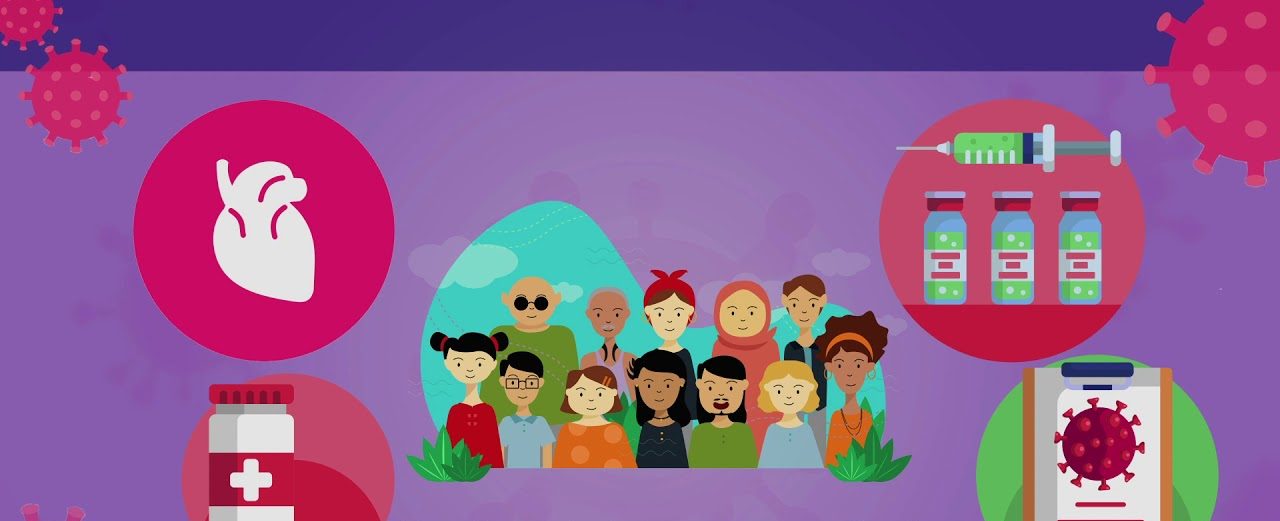NON COMMUNICABLE DISEASES & COVID 19
NON COMMUNICABLE DISEASES & COVID 19

Noncommunicable diseases (NCDs), also known as chronic diseases, tend to be of long duration and are the result of a combination of genetic, physiological, environmental and behaviours factors.
The main types of NCDs :
- Cardiovascular diseases (like heart attacks and stroke)
- Cancers
- Chronic respiratory diseases (such as chronic obstructive pulmonary disease and asthma)
DETAILS
- Accounts Nearly 71% of all deaths worldwide
- Cardiovascular diseases are the top cause of global deaths. One out of every four deaths occurs due to cardiovascular diseases, especially among younger patients.
- In the Indian subcontinent, there is early onset and rapid progression of such diseases, and a high mortality rate.
- Premature loss of life due to NCDs in the age group of 30-69 years is also very high among Indians.
- Half the deaths due to cardiovascular diseases occur in the age group of 40-69 years.
HAS INDIA TAKEN ANY STEPS
To address this growing burden of NCDs, the National Health Mission launched the National Programme for Prevention and Control of Cancer, Diabetes, Cardiovascular Diseases and Stroke, in 2010, focusing on strengthening infrastructure, promoting good health, human resource development, early diagnosis, management and referral.
IMPACT OF COVID-19
- The rapid spread of COVID-19 has severely tested primary healthcare systems, which perform myriad functions, across the world. Maternal healthcare services, immunisation, health surveillance, and the screening and management of NCDs have all been severely disrupted.
- A World Health Organization (WHO) survey conducted in May 2020 among 155 countries found that low-income countries were the most affected by this disruption.
- More than half (53%) of the countries surveyed had partially or completely disrupted services for hypertension treatment, 49% for treatment for diabetes and diabetes-related complications, 42% for cancer treatment and 31% for cardiovascular emergencies.
- The outcomes in COVID-19 patients with pre-existing cardiovascular disease risk factors or with established cardiovascular disease can be worse than others, perhaps due to low cardiorespiratory reserve, worsening of the underlying cardiovascular disease due to systemic effects of the illness, or precipitating novel cardiac complications.
- Data from the National Health Mission’s Health Management Information System in India show that emergency services for cerebrovascular diseases dropped by about 14%. Among NCDs, persons with diabetes are at an exceptionally higher risk of severe clinical outcomes of COVID-19.
- A recent study reported that nearly one in every two Indians living with diabetes is unaware of their condition. They are at higher risk of dying if they contract COVID-19 because of uncontrolled glucose levels in their blood. Findings from an observational study in Delhi show that 47.1% of hospitalised COVID-19 patients had diabetes.
- In most countries, staff working in the area of NCDs were reassigned to support patients with COVID-19, and public screening programmes were postponed. Shortage of medicines, diagnostics and technologies were the main reasons for discontinuing services in one-fifth of the surveyed countries.
- Cancellations of planned treatments, decreased availability of public transport, and lack of staff were the most common reasons for the disruption of NCD services. NCD services also got more disrupted as countries moved to the stage of community transmission from the stage of sporadic COVID-19 cases.
- Lockdowns and reduced physical interactions led to loneliness, especially in the geriatric population. This resulted in mental health disorders such as anxiety and depression. Lockdowns increase exposure to NCD risk factors as people became more likely to increase their consumption of alcohol and tobacco and adopt an unhealthy diet.
SOLUTIONS
- Action plan must include tobacco cessation activities as tobacco consumption
- Alternative strategies must be adopted Example : Among the countries reporting service disruptions, half are using telemedicine.
- There is an urgent need for national and State health policymakers to draw up a road map which gives equal weight to patients living with NCDs.
- Utilising the existing network of NGOs while respecting local factors will go a long way in tackling the growing burden of NCDs. Campaigns on maintaining a healthy lifestyle need innovation; the monotony of broadcasting the same message over and over again must be broken.
Screening for NCDs at the grassroots level and the delivery of locally relevant and contextual messages for health promotion and primordial prevention of NCDs can be significantly improved by incentivising the already overburdened ASHA workers.

